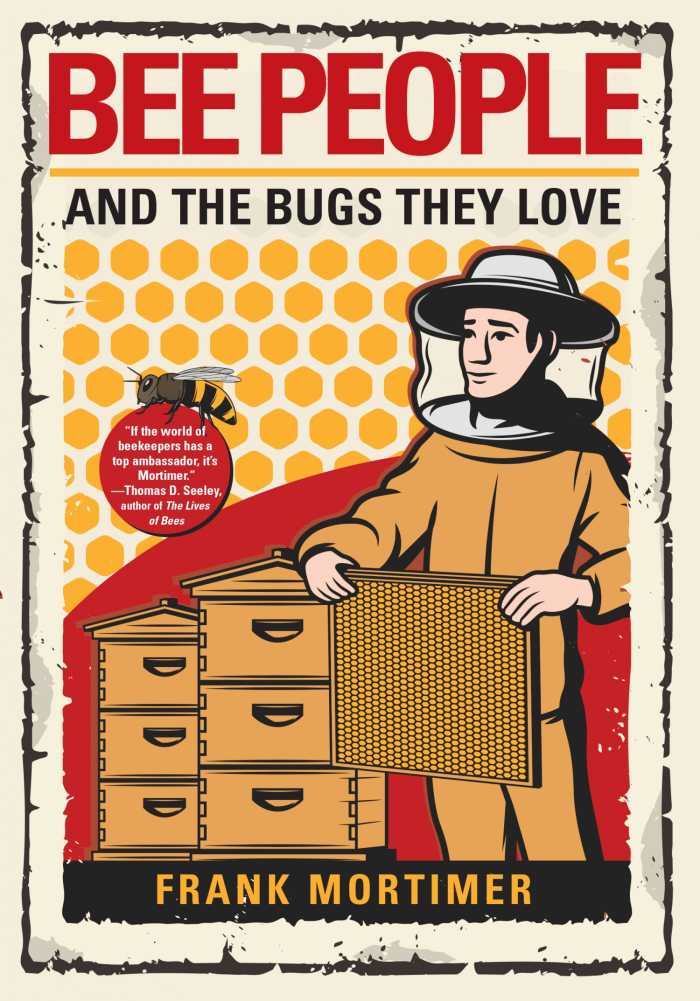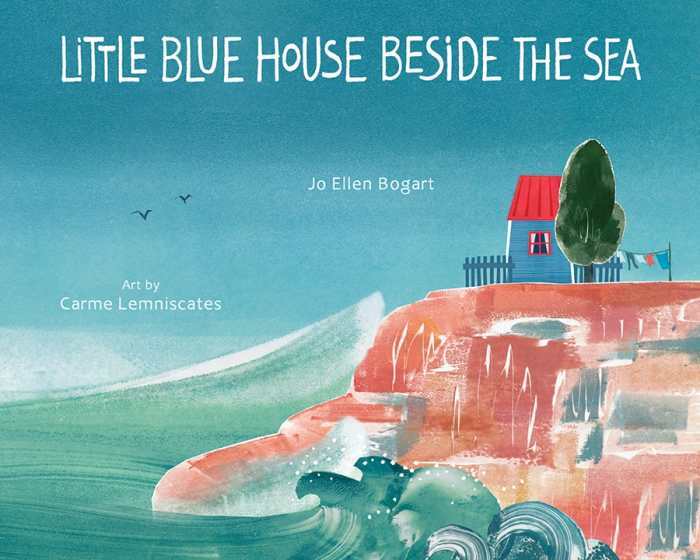Book of the Day Roundup June 29-July 3, 2020

The Joy of Sorcery

Sten Nadolny
Breon Mitchell, translator
Lynda Mitchell, translator
Paul Dry Books
Softcover $18.95 (265pp)
978-1-58988-146-4
Buy: Local Bookstore (Bookshop), Amazon
In Sten Nadolny’s masterful The Joy of Sorcery, magic, love, and family illuminate a tragic time in world history.
Pahroc is the sorcerer son of a Paiute Indian man and a Berliner woman. In a series of letters to his young granddaughter Mathilda, Pahroc describes growing up as a sorcerer in twentieth-century, war-torn Germany. Now an old man, Pahroc writes in a charming, conversational style under the guise of teaching Mathilda how to be a sorceress herself.
In his first letter, Pahroc explains to Mathilda about “The Long Arm,” an infant sorcerer’s first skill. Other lessons include comical tips on how to change one’s appearance, how to fly, and how to become invisible. Pahroc covers every topic with sly wit (on music: “No musician ever became great without annoying his neighbors.”). His gentle lectures unfold against the backdrop of war, bringing history to vivid life.
The letters unfold chronologically; however, Pahroc’s memory ranges wide as he grows into his power. Quirky, well-drawn characters inhabit a believable world that’s rich with possibilities. Delightful descriptions of Pahroc’s fellow sorcerers reveal his dangerous yet exhilarating life. Sorcerers in Europe, after all, are eccentric and unpredictable. Pahroc’s teacher, Schlosseck, likes to turn into an alligator, and Pahroc’s childhood rival, Schneidebein, foments trouble from within the German army. Pahroc’s wife Emma is a satisfying source of love and stability.
This book should be savored. Each letter to Mathilda is a tasty buffet of wise, whimsical insights into the richness of human experiences. Pahroc’s legacy of love for his family inspires zest for living, too. The Joy of Sorcery is a headlong dive into love and magic, told with humor and heart, that leaves one wishing for just one more letter from the sly old sorcerer Pahroc.
CAROL BOOTON (June 25, 2020)
These Nameless Things

Shawn Smucker
Revell
Softcover $15.99 (352pp)
978-0-8007-3530-2
Buy: Local Bookstore (Bookshop), Amazon
In a purgatorial village that’s dwindled to nine members—all of whom were traumatized in a mountainous “city of suffering”—change is brewing. Shawn Smucker’s These Nameless Things is an enigmatic allegory on post-traumatic stress and forgiveness.
A gradual, two-part plot concerns a community’s recovery of its interconnected memories, and twin brothers who were separated during their spiritual progression through the afterlife. At the start, unexpected events unsettle Dan. Mary’s bound for the east, which friends see as a celebration. A mysterious woman, Kathy, descends from the mountain, which Dan keeps a secret. Lucia returns from the east for unknown reasons. No one remembers what happened in the past—until specific images surrounding a fatal plane crash resurface.
Despite remembering that his brother Adam’s involvement pained his friends, Dan is resolved to bring Adam back from the abyss. The book’s second half concerns Adam’s rescue and everyone’s trek into a promised land. This introspective, atmospheric quest hints at love’s unwavering power to lift people out of their sins, though it leaves unanswered questions.
Kathy’s initial, ominous beguilement bears loose suggestions of devilry, but becomes ambiguous, and Lucia’s return seems to be a twist to help Dan through a difficult part of the rescue. Some of the villagers’ stories are untold. Characters’ griefs and absolvements unfold with seeming readiness.
Throughout, Dan’s guilt about his own lies couples with windswept landscapes that mirror his mental fog. As Dan’s memories intersperse with his realization that it’s not only others who need forgiving, but that he must accept forgiveness, too, a poignant case for salvation is made.
In These Nameless Things, the edges of an earthly world bleed into the next. Trauma and guilt fold into an immersive fantasy that’s eerie and precise in its world building.
KAREN RIGBY (June 25, 2020)
Bee People
And the Bugs They Love

Frank Mortimer
Citadel
Hardcover $25.00 (304pp)
978-0-8065-4083-2
Buy: Local Bookstore (Bookshop), Amazon
Frank Mortimer’s Bee People is an entertaining introduction to the world of beekeeping, drawn from Mortimer’s extensive experience raising bees in suburban New Jersey.
The book’s topics will appeal to novices, experts, and the “bee curious” alike, and include bee behavior; the role of the queen, workers, and drones; the cultivation of honey; the equipment needed for, and the seasonal challenges to, beekeeping; and efforts to combat colony collapse disorder.
Mortimer is a playful storyteller, and his text is lively with the challenges and appeal of keeping bees. It notes his surprise when Sunrise Farms—the source for some of his first hives—was not an “idyllic farm with horse–plowed fields,” but a couple of picnic benches in a suburban backyard. And joining a local bee club, Mortimer wonders whether he’s going to learn “a secret bee handshake” or go through “some sort of insect initiation ceremony,” but instead finds stale cookies and a group of eccentric “bee nerds,” including the “one-eyed bee guy” who drives a 1959 Cadillac Eldorado painted bright bee yellow with black racing stripes—“bigger than some New York City apartments.”
Mortimer’s growth as a beekeeper, from an enthusiastic but bumbling beginner whose first hive died to his role as a recognized teacher, writer, and mentor in the beekeeping community, is detailed, too. Bee People is as much about beekeepers as it is about bees themselves, and those sketched include the Surgeon, who dons “full head-to-toe bee suits” and approaches his hives “the same way a surgeon walks into the operating room,” and the Cowboy, “who doesn’t wear any type of veil, usually has forgotten to bring his smoker, and just jumps in without any real plan.”
Bee People is a compelling memoir that’s filled with information about beekeepers and the tiny, fascinating creatures to whom they tend.
KRISTEN RABE (June 25, 2020)
Little Blue House Beside the Sea

Jo Ellen Bogart
Carme Lemniscates, illustrator
Tilbury House Publishers
Hardcover $16.95 (32pp)
978-0-88448-671-8
Buy: Local Bookstore (Bookshop), Amazon
A wee redhead in a matching knit vest and pom-pommed beanie observes the world around them, taking pleasure in the raging storms and sunny flowers, in this charming read-aloud with an underlying message about global connectivity and environmental awareness. Rhyming couplets tell the tale of a well-loved seaside cottage on a rocky northern shore; whales and puffins are rendered in unique monotype textures against sweeping mixed media landscapes to capture the wild seasons and changing weather.
PALLAS GATES MCCORQUODALE (June 25, 2020)
The Change
My Great American, Postindustrial, Midlife Crisis Tour

Lori Soderlind
University of Wisconsin Press
Hardcover $26.95 (232pp)
978-0-299-32830-6
Buy: Local Bookstore (Bookshop), Amazon
Awakening to the sad image of herself and her partner sleeping on opposite sides of the mattress, Lori Soderlind mused on discontent and change—her own, and that of the US. The Change is her probing memoir about discovering what had gone wrong, and working to fix it, during a five-thousand-mile drive across America’s crumbling midsection with her aging dog.
On the cusp of fifty, increasing gray hairs and (horrors!) a gray whisker or two reminded Soderlind that life was passing her by. Then came the crisis. In the chaos of perimenopause and feeling herself ignite upon meeting a long-lost love in a store parking lot, she was pushed over the edge. Although she had not been physically unfaithful, Soderlind knew she was in trouble; the fine crafted, but tenuous, structure of her life was about to crack.
Thus began Soderlind’s trek through middle America, visiting small towns whose big dreams and thriving industries had turned to dust, and whose remaining few residents struggled to survive on memories. She wanted to feel their pain, and to see if she could discover what might make them, and herself, feel alive again. She wished that she could “love back to life what was lost.” What she discovered was that change is both unavoidable and relentless, and that America was just as confused as she was, and just as uncertain of its survival.
Soderlind’s photographs of small towns in ruin underline her realization that both she and her country were trying to pretend that they were fine, and failing. The Change exposes the pain of owning the hollow places in one’s self and reveals luminous moments of pure love found in the simplest of people and places—moments that are worth the sorrow of an inevitable goodbye.
KRISTINE MORRIS (June 25, 2020)
Barbara Hodge
